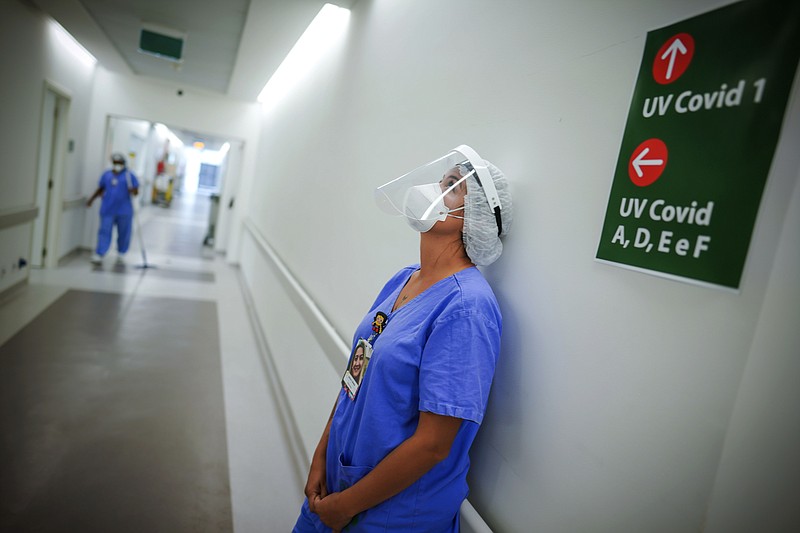I'm a respiratory therapist. With the fourth wave of the pandemic in full swing, fueled by the highly contagious delta variant, the trajectory of the patients I see, from admission to critical care, is all too familiar. When they're vaccinated, their COVID-19 infections most likely end after Stage 1.
Get vaccinated. If you choose not to, here's what to expect if you are hospitalized for a serious case of COVID-19.
Stage 1. You've had debilitating symptoms for a few days, but now it is so hard to breathe that you come to the emergency room. Your oxygen saturation level tells us you need help, a supplemental flow of 1 to 4 liters of oxygen per minute. We admit you and start you on antivirals, steroids, anticoagulants or monoclonal antibodies.If we can wean you off the oxygen, you'll get discharged. You survive.
Stage 2. It becomes harder and harder for you to breathe. "Like drowning," many patients describe the feeling. The bronchodilator treatments we give you provide little relief. Your oxygen requirements increase significantly, from 4 liters to 15 liters to 40 liters per minute. Little things, like relieving yourself or sitting up in bed, become too difficult for you to do on your own. We transfer you to the intensive care unit.
Stage 3. You're exhausted from hyperventilating to satisfy your body's demand for air. We put you on noninvasive, "positive pressure" ventilation - a big, bulky face mask that must be Velcro'd tightly around your face so the machine can efficiently push pressure into your lungs to pop them open so you get enough of the oxygen it delivers.
Stage 4. Your breathing becomes even more labored. An arterial blood draw confirms that the oxygen content in your blood is critically low. We prepare to intubate you. If you're able to and if there's time, we will suggest that you call your loved ones.
We connect you to a ventilator. You are sedated and paralyzed, fed through a feeding tube, hooked to a Foley catheter and a rectal tube. We turn your limp body regularly, so you don't develop bed sores. We bathe you and keep you clean. We flip you onto your stomach to allow for better oxygenation. We will try experimental therapeutics.
Stage 5. Some patients survive Stage 4. Unfortunately, your oxygen levels and overall condition have not improved after several days on the ventilator. Your COVID-infested lungs need assistance and time to heal, something that an ECMO machine, which bypasses your lungs and oxygenates your blood, can provide. But alas, our community hospital doesn't have that capability.
If you're stable enough, you will get transferred to another hospital for that therapy. Otherwise, we'll continue treating you as best we can.
Stage 6. The pressure required to open your lungs is so high that air can leak into your chest cavity, so we insert tubes to clear it out. Your kidneys fail to filter the byproducts from the drugs we continuously give you. Despite diuretics, your entire body swells from fluid retention, and you require dialysis to help with your renal function.
The long hospital stay and your depressed immune system make you susceptible to infections. A chest X-ray shows fluid accumulating in your lung sacs. A blood clot may show up, too. We can't prevent these complications at this point; we treat them as they present.
If your blood pressure drops critically, we will administer vasopressors to bring it up, but your heart may stop anyway. After several rounds of CPR, we'll get your pulse and circulation back. But soon, your family will need to make a difficult decision.
Stage 7: After several meetings with the palliative care team, your family decides to withdraw care. We extubate you, turning off the breathing machinery. We set up a final FaceTime call with your loved ones. As we work in your room, we hear crying and loving goodbyes. We cry, too, and we hold your hand until your last natural breath.
I've been at this for 17 months now. It doesn't get easier. My pandemic stories rarely end well.
The Los Angeles Times
